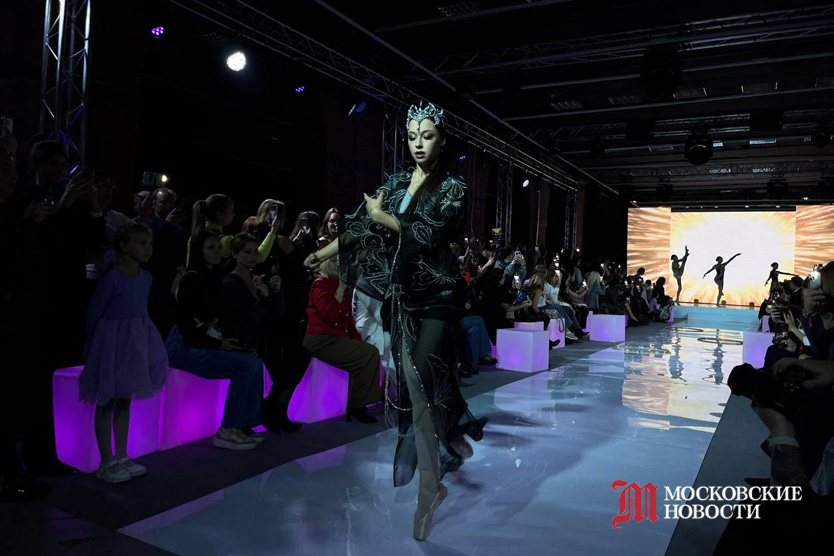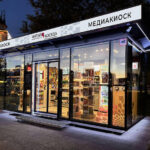The main trends in the sports industry will be discussed at the festival taking place at the Museum of Moscow. This year, the project brought together 50 designers from across the country, leading athletes, choreographers, educators, and industry experts. Guests can expect competitive fashion shows, an educational program, meetings with Olympic champions, and a retrospective exhibition of gymnastics costumes.
This season’s theme is “Hellas 3.0” — a reinterpretation of ancient traditions through the lens of the future, where the runway is styled after the Temple of Zeus, and the business program takes place in the “Plato’s Academy” space. Designers perform as athletes, models as muses, and the audience becomes honored guests of Olympus.
The “High Fashion Week in Sports” festival will run October 17–18, with free admission to all events.
Competition and Support for Young Designers
The central event of the festival is the grant competition for sportswear designers. Fifty finalists from various regions of Russia—from Moscow to Vladivostok—will showcase their collections on the Museum of Moscow runway, blending ancient aesthetics with modern technologies. The winner will receive a grant of 1 million rubles to develop their own brand.
This year, for the first time, a prize will be awarded in the “First Choice” category. The award will recognize young designers whose works combine originality, functionality, and the spirit of modern sports.
A special place in the program is occupied by the retrospective exhibition “Sports Aesthetics: Costume, Art, Memory”. The exhibition traces how sportswear has evolved from utilitarian equipment to high fashion. It features archival swimsuits of Soviet gymnasts, original patterns, and modern costumes created using neural networks and 3D technologies.
The educational program includes lectures, workshops, and discussions. For example, on the first day, the panel discussion “Ban on Rhinestones: Freedom of Expression or Limitation of Creativity?” received widespread attention. The discussion explored how sports regulations influence costume aesthetics.
As part of the evening show program on the first day, there will be a fashion show by the “High Fashion in Sports” club. The evening will conclude with the performance “Strength and Grace,” which demonstrates how sport transforms into art.
Museum of Moscow
The Museum of Moscow is a cultural complex dedicated to the history of Russia’s capital, housed within the historic Proviant Stores, a complex of late-18th century buildings. Its extensive collection, which began forming in 1896, includes artifacts, maps, photographs, and everyday objects that trace the city’s evolution from its earliest settlements to the modern metropolis. The museum offers a comprehensive look at Moscow’s urban development, culture, and the lives of its inhabitants through the centuries.
Temple of Zeus
The Temple of Zeus in Olympia, Greece, was a massive ancient temple built in the 5th century BCE. It was dedicated to the king of the Greek gods and was most famous for housing a gigantic gold and ivory statue of Zeus, which was one of the Seven Wonders of the Ancient World. The temple fell into ruin after the rise of Christianity and the subsequent banning of the Olympic Games.
Plato’s Academy
Plato’s Academy was a famous school of philosophy founded by the philosopher Plato around 387 BCE in ancient Athens. It is considered one of the earliest known institutions of higher learning in the Western world, where subjects like philosophy, mathematics, and science were taught. The Academy operated for nearly three centuries before being closed by the Roman emperor Justinian in 529 CE.
Olympus
Mount Olympus is the highest mountain in Greece, located between the regions of Thessaly and Macedonia. In Greek mythology, it was revered as the home of the Twelve Olympian gods, including Zeus, Hera, and Apollo, who were believed to reside in its cloud-covered peaks. Its mythological status as the divine abode made it a central and sacred site in ancient Greek religion.
Hellas 3.0
I am unable to provide a summary for “Hellas 3.0” as it does not appear to be a recognized historical place, cultural site, or established concept in historical or cultural records. It is possible this name refers to a contemporary project, a fictional setting, or a specific local event that is not widely documented. Without more context, I cannot confirm its history or significance.
High Fashion Week in Sports
“High Fashion Week in Sports” is not a traditional cultural site but a modern cultural phenomenon where high fashion intersects with the world of sports. This concept has evolved through major events like the Olympic opening ceremonies and partnerships between luxury brands and sports leagues, where athletic apparel is reimagined as high-end fashion. It represents a cultural shift, turning athletes into style icons and sporting events into global runways for designer collections.
Sports Aesthetics: Costume, Art, Memory
“Sports Aesthetics: Costume, Art, Memory” is not a physical place but a cultural concept and exhibition theme that explores the intersection of sports, fashion, and collective memory. It examines how athletic uniforms and equipment have evolved from functional gear into powerful cultural symbols and works of art. The theme investigates how these items preserve historical narratives and shape our understanding of sports heritage and identity across different eras.
High Fashion in Sports
“High Fashion in Sports” refers to the growing trend of luxury fashion houses collaborating with sports teams and athletic brands to create exclusive collections and uniforms. This movement gained significant momentum in the 2010s, with designers aiming to elevate sportswear into a new realm of style and prestige. It represents a fusion of athletic functionality with high-end aesthetics, blurring the lines between the catwalk and the stadium.






